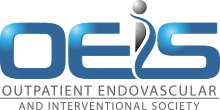Resources for the OBL/OIS: How to financially survive during COVID-19

Bob Tahara MD FSVS FACS RVT RPVI
The past few months and the accelerating novel coronavirus pandemic have created unprecedented challenges for nearly all physicians and healthcare professionals both in the America and abroad. Here in the USA, many states have enacted quarantines, closed “non-essential” businesses, and severely limited or completely banned the performance of “elective” surgical cases. The net effect has been to create significant clinical, administrative, and financial burdens for physicians who own and/or practice in an office interventional suite (OIS).
Most OIS owners/physicians have a significant investment in equipment, consumable endovascular stock, and staffing. They may or may not own their building/office space, or even have multiple real estate sites that are owned or leased. These expenses are typically offset by the revenues generated from performing procedures in the OIS – but in general, most OIS situations have high overhead costs that require a fairly robust continuing income stream. This paper will briefly explore strategies to cope with the COVID-19 induced fiscal strains and also list resources available.
“Inflows – Outflows = Net Cashflows”
This equation seems simplistic and trivial but is actually the crux of the issue. With the inability to perform procedures comes a dramatic drop in revenues (inflows): this is likely not optional given multiple state mandates that ban the performance of elective procedures. Many states will allow continued performance of life and/or limb salvaging procedures under some defined conditions – but not all. For most OIS physicians this is the overwhelming stressor and potentially disastrous factor for continuing practice viability. So what options are available to create inflows to keep the practice solvent? As it turns out, there are some limited options that can be employed to create inflows:
- See below Federal/HHS resources to support small business/practices
- CMS has created multiple blanket waivers including a temporary hold on many Stark provisions – they have temporarily waived requirements that contracts between hospitals and non-employed local physicians be at “Fair market value”. This opens the possibility to collaborate and contract with your local hospital(s) to provide outpatient vascular care and thus off-load those patients from a potentially overburdened inpatient service1
- CMS has also created waivers to make telemedicine encounters easier to perform and bill by removing many of the technical audiovisual requirements and allowing audio only phone calls to be billed as a telehealth encounter1
Outflows may also be difficult to manage – one cannot simply stop paying real estate and equipment leases, maintenance contracts, and the other sundry fixed expenses that an OIS has. One approach is to try to define which costs are fixed and which costs are “optional”. Costs defined as fixed (mortgage/rent, liability insurance, malpractice insurance, equipment lease payments, etc.) clearly will need paid. But some costs can be deferred, eliminated, or modified. This includes items such as advertising (radio, print, television), cable television and internet services, office convenience food and coffee services, and other consumables. Medical and endovascular consumable warrant special attention as these items are frequently one of the larger expenses for most OIS. Since case volumes are down or completely on hold, it may well be feasible to postpone or limit purchases or replacement of used stock – so long as enough stock is maintained to conduct those cases the OIS is still able to do within the confines of that particular state’s limits.
Probably the single biggest outflows that are modifiable are those involving payroll costs. Many offices furloughed their entire or portions of the workforce and many physicians simply stopped taking a part or any compensation to conserve cashflow. Other offices maintained their employees working or on the payroll, and in some cases the physicians were the only employees that had their compensation limited. This becomes a very individual decision for each center but must be contemplated and actively decided upon.
Federal/HHS resources for the OIS during the COVID-19 Crisis
Finally, the most significant assistance to inflows may well be the host of federal stimulus programs that were enacted by Congress and the Health and Human Services Department in response to the COVID crisis. The CARES (Coronavirus Aid, Relief, and Economic Security) Act created multiple pots of stimulus monies and directed HHS to provide direct relief to a broad range of health care providers including but not limited to hospitals, clinics, and physicians. These stimulus monies in total exceed three trillion dollars! Many if not most OIS practices are eligible for multiple of these programs and each has its own requirements and limitations. The most important programs are listed and described below:
- Paycheck Protection Program (PPP)2. This program was intended to assist small businesses with less than 500 employees maintain their workforce and prevent further job losses/furloughs. The program provided for a loan of up to 2.5 times the average monthly payroll for that business and payroll costs could include both health insurance premiums as well as retirement plan costs. The loan would be forgivable (become essentially a grant) if the practice complies with the requirements of retaining their employees and expending at least 60% of the loan proceeds on actual payroll costs as defined above. President Trump signed a modification of these requirements on June 5, 2020 which loosens and further modifies these conditions. Applications are made through any SBA approved bank but the initial demand for this loan was significant and the initial nearly $350 billion was exhausted by April 16, 2020. Subsequent additional monies were made available on August 27,2020. For further up to date info please see the references below
- Economic Injury Disaster Loans (EIDL)3. This loan program existed and predated the COVID crisis and allows small businesses to access monies to offset revenue losses created or influenced by defined disasters. The program allows for a rapid advance of up to $10,000 and this specifically was deemed non-repayable for the COVID crisis. Applicants to not have to be approved for a loan to receive the advance but must apply for said loan formally. The amount advanced (if any) is deducted from total loan eligibility going forward. Any EIDL loans granted may be converted to a PPP program loan and thus forgiven and the any EIDL monies granted (including the advance $10,000) are deducted from the total PPP amount the applicant may receive. If the EIDL is taken and not converted to a PPP, the repayment terms are relatively flexible and more information is available at the SBA site3
- HHS “Tranche 1”4. The CARES Act also allocated and directed HHS to disburse approximately $100 billion as part of the Public Health and Social Services Emergency Fund. Thus far 2 separate tranches of funding have been made available. “Tranche 1” was $30 billion and was automatically distributed to hospitals and providers based on FY 2019 Medicare billing. Essentially, providers were allocated a percentage of the $30 billion based on their percentage of the total 2019 Medicare funds that they received- after the math was completed this amounted to roughly $63,000 per $1 million received from Medicare in 2019. Tranche 1 dollars were electronically transmitted to the bank accounts on file with Medicare as an ETF beginning on April 10, 2020
- HHS “Tranche 2”4. This is an additional $20 billion which, unlike Tranche 1, required physician practices to apply for consideration. Most, if not all, of the monies were directed to rural providers, clinics, and other designated recipients and many OIS physicians were not eligible. No OIS based physician contacted in the preparation of this white paper was successful in receiving Tranche 2 funds
- Medicare Accelerated and Advance Payments Program5. This program predated the COVID crisis but HHS made applying for the Accelerated and Advance Payments simple and concise to address the revenue shortfalls practices because of the pandemic. The program allows the physician to receive an advance based on the last quarter of 2019 – an advance payment up to and equal to 100% of that amount will be electronically transmitted to the bank account receiving current CMS payments. Repayment for Part B physicians begins 120 days from disbursement and repayment will be effectuated by recoupment from claims starting at the 120 day mark. Practices have 210 days to complete repayment/recoupment. Program eligibilty is found at the below references. It should be noted that effective April 26,2020 CMS suspended the Advance Payment Program to Part B suppliers (ie physicians) and will no longer accept applications for this program.
Outflows may also be difficult to manage – one cannot simply stop paying real estate and equipment leases, maintenance contracts, and the other sundry fixed expenses that an OIS has. One approach is to try to define which costs are fixed and which costs are “optional”. Costs defined as fixed (mortgage/rent, liability insurance, malpractice insurance, equipment lease payments, etc.) clearly will need paid. But some costs can be deferred, eliminated, or modified. This includes items such as advertising (radio, print, television), cable television and internet services, office convenience food and coffee services, and other consumables. Medical and endovascular consumable warrant special attention as these items are frequently one of the larger expenses for most OIS. Since case volumes are down or completely on hold, it may well be feasible to postpone or limit purchases or replacement of used stock – so long as enough stock is maintained to conduct those cases the OIS is still able to do within the confines of that particular state’s limits.
In summary, the COVID pandemic has presented formidable and new challenges to the OIS physician. Navigating this crisis will require physicians to maximize their inflows, minimize what outflows can be limited, and utilize federal and HHS stimulus monies to weather this storm.
References/links
- https://www.cms.gov/about-cms/emergency-preparedness-response-operations/current-emergencies/coronavirus-waivers
- https://www.sba.gov/funding-programs/loans/coronavirus-relief-options/paycheck-protection-program
- https://www.sba.gov/funding-programs/loans/coronavirus-relief-options/economic-injury-disaster-loan-emergency-advance
- https://www.hhs.gov/coronavirus/cares-act-provider-relief-fund/index.html
- https://www.cms.gov/files/document/accelerated-and-advanced-payments-fact-sheet.pdf
